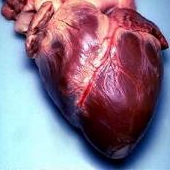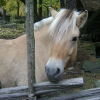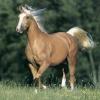Today’s topic comes from ingsve over at the Dothraki fora. The inventory of color terms in any given language is likely to prove more interesting than one would imagine at first blush. In discussing color terms in Dothraki, then, I’ll add layers of complexity as we move on, starting with the simplest information.
Here are the ten basic color terms of Dothraki:
| English Term | Dothraki Term | Color Swatch |
|---|---|---|
| red | virzeth | |
| blue | thelis | |
| green | dahaan | |
| yellow | veltor | |
| purple | reaven | |
| pink | theyaven | |
| brown | nozhoven | |
| gray | shiqeth | |
| white | zasqa | |
| black | kazga |
There is no “orange”; that term is covered usually by veltor; sometimes by virzeth. Otherwise, those color terms can be used freely to cover the colors we have in English. The forms above are adjectival. To change them to verbs, simply add -at to those that end in a consonant, and -lat to those that end in a vowel.
Having said that, those who’ve studied Dothraki a bit will notice that at least three of those terms should look suspicious—specifically, those ending in -ven. And if you thought so, you’re right. Though Dothraki now has words to cover ten of the eleven basic color terms, they’re not equal, linguistically.
For many years, Dothraki had the basic set of color terms listed below. For each color, its prototypical value is given, followed by the range of colors it was used for.
| English Term | Dothraki Term | Color Swatch | Color Range |
|---|---|---|---|
| red | virzeth | ||
| blue/purple | thelis | ||
| yellow/green | dahaan | ||
| yellow/orange | veltor | ||
| light | zasqa | ||
| dark | kazga |
And before that there were fewer color terms (for example, dahaan, in a time long before the present, derived ultimately from a type of grass called dahana. Prior to this, thelis was used for most blues and greens). As Dothraki khalasars met with traders, caravans and cities around the edges of the Dothraki Sea, they encountered new products, new types of clothing, new dyes, and found a need for new terms. As they prefer native terms to borrowings, they would often derive terms from Dothraki words, such as:
| Dothraki Word | Color Term | Image | Color Swatch |
|---|---|---|---|
| rea “internal organ” | reaven |  |
|
| theya “nipple” | theyaven |  |
|
| shiqethi “iron” | shiqeth |  |
The two words ending in -ven should be self-explanatory (-ven is used to mean something like “-like” or “-ish”). Shiqeth is actually a backformation. The original word is shiqethi, which is the word for “iron”; shiqeth was formed on analogy with virzeth (and the other CV(C)CVC color words thelis and veltor).
That explains everything except nozhoven thus far, but that one’s going to lead to a whole other topic: horse breeds (or colorings). There are quite a number of terms for specific types of horses, but the only ones that got used in the show were the generic “horse” (hrazef), and the word for “mount” (sajo). (Hmmm… Though now that I think of it, maybe vezh, “stallion”, and lame, “mare”, made it in, too.) It seems to me that words for the type of horse would be used more commonly, but that would require seeing the actual horse being referred to (and who knows if it would change from shoot to shoot, episode to episode). So I never managed to use any of the words for particular breeds of horse in the first season (we’ll see if any make it in in the future).
Anyway, the word nozho is the word for a chestnut horse, which is brown (anywhere from a reddish brown to a light brown), with a mane that is mostly the same color (sometimes lighter). Nozhoven, then, is a word meaning “like a chestnut horse”—or, in this case, “similar in color to a chestnut horse”. Most horses have a color term associated with them in this way, but since chestnuts tend to be largely one color all over (and since there was no other term for “brown”), nozhoven was adopted as the word for “brown”.
There are dozens of horse coloring types, and also related terms having to do with horse coloring, and there’s no time to go through all of them. I did want to introduce some, though, since the horse color terms are used in another unique way. In English, we’ve taken words from a number of places to describe skin color: actual color terms (white, black…); plants or food (olive, mocha…); light descriptors (light, dark…); and other sources (tan, pale, splotchy…). In Dothraki, all such descriptors come from horse colorings. Here are some common ones:
| Horse Term | Color Term | Image | Approximation |
|---|---|---|---|
| messhih “perlino” | messhihven |  |
|
| ocha “dun” | ochaven |  |
|
| qahlan “palomino” | qahlamven |  |
|
| nozho “chestnut” | nozhoven |  |
|
| cheyao “dark bay” | cheyaoven |  |
The way I figure it, if the Dothraki refer to you with a horse term, it’s a sign of respect, as horses of all types are to be respected. If they refer to you as some sort of lesser animal, though (like oqet, a sheep), then it’s time to worry.
Now just a few words about how to use them. Color terms are all stative predicates, and so can be used postpositively as adjectives, or as verbs, e.g.:
- Haz rhaggat virzetha. “That cart is red.”
- Anha vavvirsak haz rhaggat virzetha nakhaan! “I’m going to burn that red cart to the ground!”
The word for “color” itself is visshiya, which derives, ultimately, from vish, which means “forehead”. For different qualities of color (to make finer distinctions), one uses words that would translate to “light” and “dark”, but they’re not actually the words “light” and “dark”. The Dothraki conceptualize color value in terms of water depth, darker colors being deep (ao), and lighter colors being shallow (dei). Then each of those terms can be modified to delineate further. Here’s an example:
| Dothraki Term | English Translation | Color Swatch |
|---|---|---|
| virzeth adein | shallower red | |
| virzeth dei | shallow red | |
| virzeth | red | |
| virzeth ao | deep red | |
| virzeth asaon | deeper red |
That’s a basic introduction to color terms in Dothraki. There’s more to be said, certainly, but this should be enough to allow one to use some color terms in writing and in speech.

Very cool.
I’m sure there will probably be more questions are we start sifting through the post but the first thing I’m wondering about is the adjectives ao and dei. As far as I know adjectives modify nouns and pronouns and if something is modifying an adjective it’s usually an adverb right? So, should ao and dei be understood as adjectives acting on an adjective in this case or is there something else that’s going on? I guess the question applies to English as well where the light in “light red” is also an adjective right? Or are those word treated as adverbs in these cases?
I’d probably call those compound modifiers. That is, it’s not the case that a rhaggat virzeth ao is both a rhaggat virzeth and a rhaggat ao: ao modifies virzeth. Whether it’s an adverb or not is, I suppose, up to one’s interpretation (or a linguist’s description). I’d just call it a compound adjective.
Cool. Dothraki have pretty well developed colour vocabulary, as far as I understand. Pink is just now finding it’s roots in Finnish, though orange is well established. And skipping orange kinda makes sense: scientificish colour wheel: red-yellow-green-cyan-blue-magenta skips it, and any way brown is pretty much just dark orange. Speaking of pink and orange, it’s curious that dothraki call pink a nipple-colour. I did some research (internet seems to offer a lot of pictures of female breasts) and still can’t say anything decisive, but I think nipples are generally darker than skin, and thus you need to be quite light-skinned to be likely to have pink nipples; most people seem to have brown nipples. Pink nippled dothraki, counterfactual ideals, euphemism, complicated etymology stuff..? So little details. You can’t write a language without also writing the people speaking the language, can you.
If it’s any consolation, my nipples are brown. I’m not sure what the relationship is either (nor do I know how systematic it is), but I think of theyaven as running the spectrum from pink to tannish orange (like salmon). Also, this word will have come into existence long after contact with the wider world. The Dothraki would be well familiar with the vast rainbow of nipple colorings the world has to offer.
All I can say until I read the entire post carefully is WOW! I wish Na’vi had color words like this, especially considering how colorful their world is.
On the subject of horses, what types do the Dothraki ride? Are they predominately smaller types meant for speed, or do they possess larger Westrosi style war horses? If so, do we have names to differentiate them?
A difficult question to answer, since George R. R. Martin is the keeper of the keys, so to speak. They would, certainly, distinguish between types of horses; what types of horses those are, though, is a question that’s not easy to answer.
So we know that most of the Westerosi knights ride on destriers or “chargers”: Nice big war horses suited for jousting and other types of mounted combat. It seems likely that the Dothraki would know of this type of horse, at the very least. Are there lots in Essos? Not sure. There would need to be a demand, suppliers, and easy means of transport across the Narrow Sea. I don’t think this is something we’ve seen, so we can only guess.
One thing we can assume of Dothraki horses is that they probably will not be large: they’ll be lean, durable racing horses. A lot of the larger horse types arose because the horses were being used for farm labor—something the Dothraki don’t do. The Dothraki race their horses, ride them all over, and use them in battle—and also eat their meat. Since they don’t joust or use heavy armor, a successful Dothraki warrior is going to be one that’s quick: One who can get in and out of combat, and who can deliver a blow without taking a hit (something a knight in armor doesn’t need to worry about so much). Their horses, then, would need to be light and quick, or this style of combat simply wouldn’t work.
Having said that, this is all conjecture. This is what we can guess (and what we can assume) based on what we’ve read. For more specific detail, we’d need to ask George Martin himself.
I really like the use of depth as a metaphor for colour value. It makes a lot of sense, while still being somewhat different from English (we do say “deep red”, but not “shallow red”).
In Okuna, the relevant metaphor is thickness or density. A saturated colour is described as “thick/dense”, while an unsaturated colour is “thin/weak” (the same words are also used to describe the thickness of soup, hair, or forests).